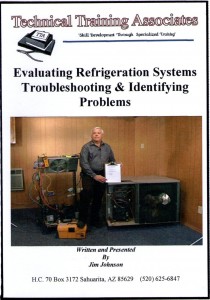In trade school, we were taught that the low-side pressure is consistent throughout the low side and that the high-side pressure is consistent throughout the high side. However, except for some small, close coupled systems, this is generally not true. There will be some pressure drop as the refrigerant travels from the compressor to the inlet of the metering device and from the outlet of the metering device back to the compressor. In a well-designed and well-operating system, the pressure drop will be minimal; however, we do not always work on well-designed systems, so we need to be aware of the possibility of severe pressure drops creating an issue for the system and how we analyze its operation.
Pressure drop across a suction line reduces a system’s capacity. A system’s capacity is based on how much saturated refrigerant, in pounds per hour, is circulated through the evaporator. The more saturated refrigerant changes from its liquid state to its vapor state, the more heat energy is absorbed by the evaporator.
One of the major components that controls the amount of refrigerant in circulation is the compressor. Most standard compressors today are constant displacement pumps, meaning they pump the same volume of refrigerant consistently as they operate. But this does not mean they necessarily pump the same amount of refrigerant by weight (pounds per hour).
The amount of refrigerant circulated by the compressor depends on the density of the refrigerant returning to the compressor. The denser the refrigerant, the more refrigerant by weight it can circulate. The density of a refrigerant is based on its pressure, so the higher its pressure, the denser it is. The lower its pressure, the less dense it is. So a reduction of the refrigerant’s pressure at the compressor will cause it to pump less refrigerant by weight.
Pressure drop across the liquid line can cause the subcooled refrigerant leaving the condenser to change back to a saturated state, resulting in the metering device being fed a mixture of liquid and vapor. This will cause a reduction in the amount of liquid refrigerant fed into the evaporator by the metering device. This will also affect the capacity of a system, since less liquid refrigerant will enter the evaporator.
It is also necessary to consider pressure drop when measuring a refrigerant’s superheat or subcooling value. Ideally, when measuring a refrigerant’s state (superheated or subcooled), we measure its pressure and temperature at the location where we would like to calculate its condition. Unfortunately, this may not always be practical; for example, if we want to measure the refrigerant’s superheat value leaving the evaporator but the refrigerant pressure can only be measured at the inlet of the compressor. A severe pressure drop across the suction line can affect this calculation. In a well-designed and well-operating system, the pressure should not drop more than an equivalent of about a 2°F change in its saturation temperature. For example, R-134A used on a medium-temperature system should have no more than about 1.5 psig pressure drop across the suction line.
If pressure drop is affecting the calculation, it may be necessary to add an access valve at the location where the refrigerant’s state can be measured to get a more accurate value. This is not always easy or convenient, but it might help in understanding the current operating status of a system.
Remember, when troubleshooting a system, be on the lookout for the possibility of a severe pressure drop, which can create an issue for the system, as well as how accurately superheat and subcooling values can be measured.
See more articles from this issue here!











